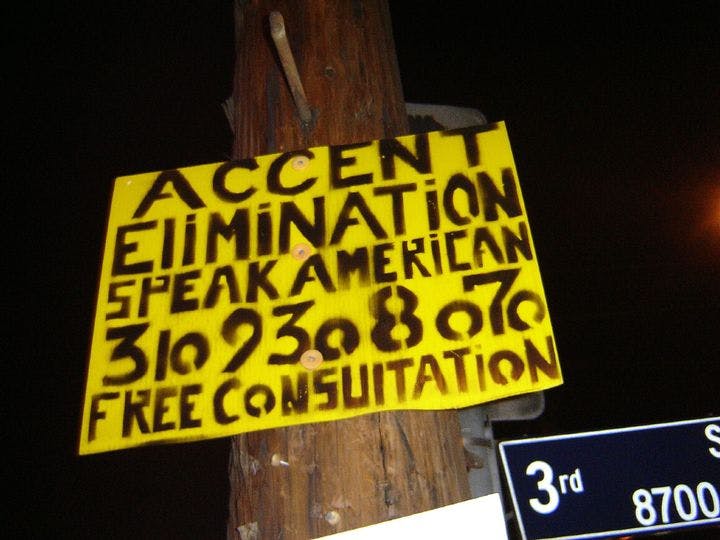Fall 2013
In the U.S., imported languages are doomed
– The Wilson Quarterly
Adios, mother tongue.
For the European immigrants who flooded into Ellis Island in the late 19th century, the language of the old country was in many cases their only one. As they started new lives and formed new communities in various parts of the United States, German, Italian, Yiddish, and Polish words began to be heard in almost every corner of the country. Many of the newcomers didn’t see the use of learning English.
“There are districts in this city, and in the other great cities,” commented The New York Times editorial board in 1891, “in which a foreigner of almost any nationality can live without being subjected to much inconvenience through his ignorance of any language but his own.” In 1897, Congress decided that arriving immigrants could take the requisite literacy test in any language they liked. By 1910, more than one in 10 Americans claimed a native tongue other than English. All signs pointed to a burgeoning polyglot nation.
On the surface, linguistic diversity appears to be thriving, but it’s not.
Then came World War I. Immigration screeched to a halt, and non-English languages suddenly were much less commonly heard. Descendants of the first-generation immigrants were quick to abandon the mother tongue. By 1970, less than five percent of Americans had been born abroad (a sharp fall from nearly 15 percent in 1910), and native speakers of foreign languages were so scarce that the Census Bureau had stopped asking which language people spoke at home. It was the Tower of Babel story in reverse, a cacophony of dialects reduced to just English.
And it’s happening again today, claim sociologists Rubén G. Rumbaut of the University of California, Irvine, and Douglas S. Massey of Princeton, writing in Dædalus. On the surface, linguistic diversity appears to be thriving, especially compared to the historic, anomalous lows it saw a few decades ago. Spanish and (to a lesser extent) Asian languages are particularly ubiquitous—but they won’t be for long. “The mother tongues of today’s immigrants will persist somewhat into the second generation,” the scholars predict, “but then fade to a vestige in the third generation and expire by the fourth,” much like those of earlier immigrants.
That forecast might seem absurd. After all, the number of Americans who didn’t speak English at home climbed from 23 million in 1980 (11 percent of the population) to 60 million in 2010 (more than 20 percent). While many in this group also spoke some English, the adherence of so many people to their native tongues is nevertheless impressive. The number of Spanish speakers in the United States has risen from 11 million to 37 million in the last 30 years; no other non-English language has ever been as prevalent as Spanish is now.
Rumbaut and Massey say that these facts hide a vital point: Today’s non-English speakers are mostly first-generationimmigrants. Fully half of the Spanish-speaking people counted in 2010 were born abroad, as were more than three-quarters of those who spoke Chinese, Hindi, Tagalog, Vietnamese, and Korean. A single generation is hardly enough time for use of a language to dwindle.
To get a better sense of what’s to come, the sociologists aggregated data from largely non–English-speaking communities in San Diego and Los Angeles. They found that history is repeating itself: “Although 84 percent of the [second] generation spoke a non-English language while growing up, only 36 percent said they spoke it well at the time of the survey.” Nearly three-quarters of the second generation preferred speaking English at home.
The decay of native-language ability accelerated after that point. In the third generation (those whose grandparents were foreign born), only 12 percent could speak the native language well. Among those in the fourth generation, only two percent could — and English was preferred at home for 99 percent.
Immigrants from Latin America have been the driving force behind the wide use of Spanish in the United States, so preserving the prevalence of the language would require a renewed stream of Spanish speakers into the country. But that seems unlikely. Demand for migrant workers is nil, and a study conducted last year by the Pew Research Hispanic Center suggested that net migration over the U.S.-Mexico border had dropped to zero, or maybe even switched directions.
As foreign communities assimilate into American culture, their language loss will only accelerate. According to Census data, those who have finished college are 20 to 40 percent more likely to be strong English speakers than those who haven’t.
Of course, acquiring English proficiency doesn’t take generations and more education. The younger an immigrant is when arriving in America, the more likely she is to become fluent. Even among those who are 13 to 34 years old when they arrive, Census data shows, a third quickly become proficient, and 44 percent speak good English within a few decades.
Without some intervention, bilingualism doesn’t stand of chance a surviving, and that’s worrisome. Foreign languages are not the threat to American identity that some would have us believe, the authors argue. Bilingualism is a precious advantage in our increasingly globalized economy. Perhaps we should begin safeguarding linguistic diversity, treating it as the miraculous — and beneficial, if endangered — creature it is.
THE SOURCE: “Immigration and Language Diversity in the United States” by Rubén G. Rumbaut and Douglas S. Massey. Dædalus, Summer 2013.
Photo courtesy of Flickr/Richard Lemarchand
